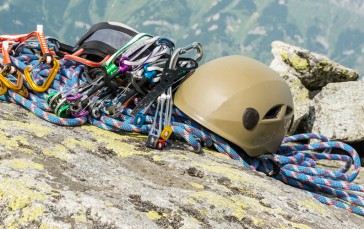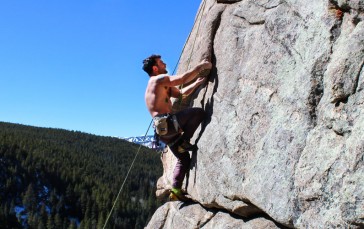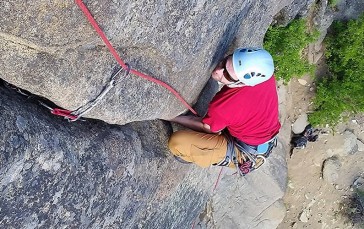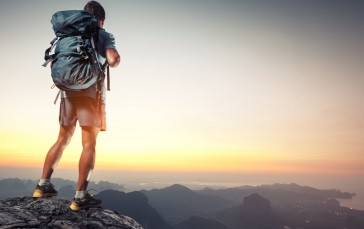Hardest Mountains In The World To Climb
Mountain climbing is one extreme sport that takes the cake in terms of the rush that it gives. Hanging precariously off the rock face, held only by a harness thousands of feet above ground level is not for the faint of heart. The brave hearts out there go seeking for the hardest mountains to climb. They live for the thrill of reaching the summit and taking breathtaking and toe-curling photos.
For many avid mountain climbers, the thought of conquering a mountain right to the top is a dream come true; even the mountains that are extremely high and prone to avalanches and rock slides is not a problem for the more professional rock climbers. If you are seeking the thrill that a challenging mountain can bring, and you are planning a climbing expedition soon, read on to find out which mountains you can climb yet live to tell the tale.
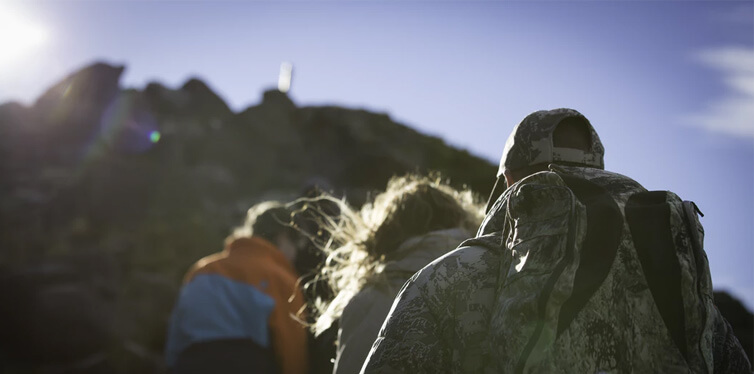
Annapurna, Nepal
Thought Everest was going to be coming in at number one, huh? Nope, the hardest mountain to climb in the world is all the way in Central Nepal. Towering over Nepal at a heart-stopping 26, 545 feet, with only 191 persons having attempted summit and 63 of them dying in the process, it isn’t hard to see why. That is literally the highest mountain climbing mortality rate in the world. Annapurna is also the tenth highest mountain in the world.
We can’t help but add that 2014 was a bad year for climbers who took on Annapurna. A heavy snowstorm led to an avalanche that claimed 43 lives. And the snow wasn’t even done yet. It went on to snow for 12 hours with over 500 individuals needing to be evacuated off the mountain. With such a height and a reputation for being avalanche prone, attempting to take on Annapurna must be a well thought out decision. You do plan to live to climb another day, right?
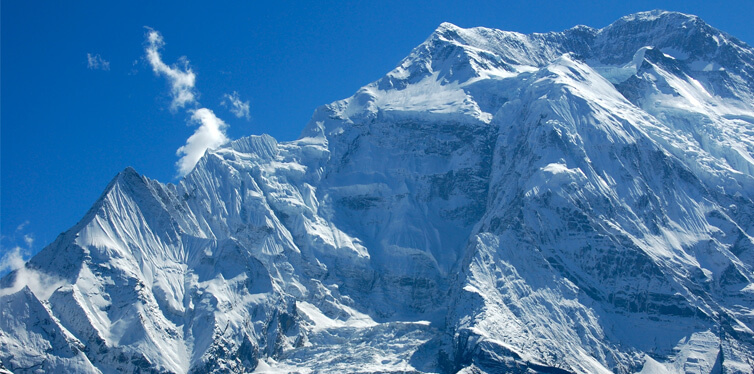
K2, Pakistan – China Border
K2, also known as Mount Chhogori, bordering two countries, is yet another difficult mountain with a not so stellar reputation. It also is the second highest mountain in the world. With a mortality rate of 19.7%, climbing K2 isn’t exactly a walk in the park especially when extreme weather and avalanches are part of the mix. A true journey of no return. Some climbers opt to take a shortcut called “The Bottleneck” which make the ascent to the summit faster but is extremely dangerous.
Statistics have it that 13 out of 14 deaths on K2 have happened on this ‘shortcut’. Vanessa O’ Brien of the United States made history in 2017 by actually reaching the summit and returning to tell the tale. She is the first woman to do so. Her summiting K2 seems like some sort of jinx breaker in the long list of women who have attempted it and met death in peculiar circumstances. All five female climbers pre O’Brien that made the summit never made it back to tell us about it. Three of them lost their lives on the descent while the other two died on nearby mountains.
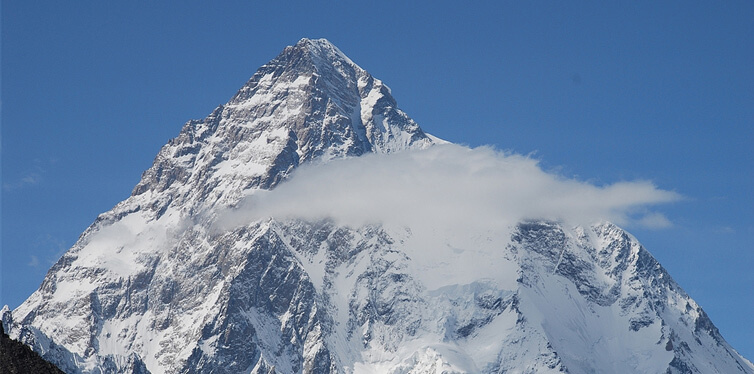
Kanchenjunga, India-Nepal Border
Standing at an impressive 28,169 feet, Kanchenjunga is a sight to behold. Considering it is the third tallest mountain in the world, that isn’t exactly a surprise. Impressive as it is, with its snow-capped peaks, Kangchenjunga has racked up quite a death toll. With an over 20% fatality rate, the outlook is grim. This is a clear case of an instance where looks can be deceiving. The number of climbers taken out by avalanches and those who fell victim to frostbite and hypothermia accounts for a large part of that percentage. On the bright side though, there have been at least 200 summits so far recorded. If you decide to visit it, make sure you are equipped with a good ski jacket and ski pants.
With the last leg of the mountain face being a lot more vertical for well over a thousand feet, summiting Kanchenjunga is a physically tasking and arduous not to mention potentially heart-stopping feat. Looking down from that height would not be a heart friending move to make. Climbers who despite these numerous odds manage to make it to the summit and even better the descent sure deserve lots of accolades.
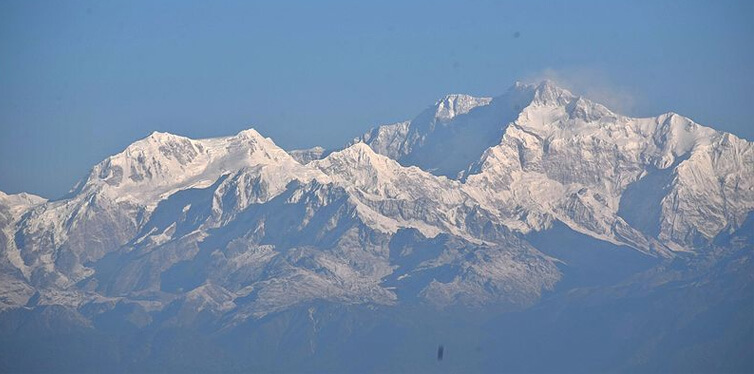
Matterhorn, Switzerland-Italy Border
At 14,691 feet, some daredevils might imagine the Matterhorn a piece of cake in comparison to those over 20,000 feet. Not so fast, though. The Matterhorn is packing quite a punch in terms of climbing difficulty. Erroneous thinking that this is an easy mountain to climb coupled with easy access to high points has led to a surge of seasoned climber wannabes (sic) crowding up the place. Such overcrowding has led to some climbers setting off rock avalanches on other climbers below. Good climbing rope, climbing helmet and rock climbing shoes are a must, but nevertheless, beware of injuries.
Between 1865 and 1995 alone, there have been 500 deaths recorded on the mountain with at least 12 death per year since then. Matterhorn takes the title in having one of the highest death tolls for mountains in the Alps. This mountain is known for having storms in the afternoon, so if you are new to climbing and want to cut your teeth on the Matterhorn, you might want to schedule that climb for off-peak season. When rock climbing is not a time to go with the crowd.
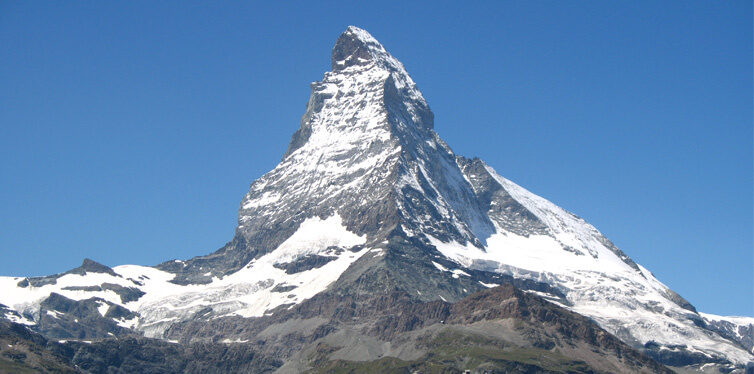
Everest, Nepal – China Border
No list of difficult mountains can be exhaustively made without mention of the popular Mount. Everest. Standing proudly at 29, 029 feet, it sure isn’t hard to see how it gained its fame. Famous as it is and attracting hundreds of climbers per year, summiting Everest makes for a difficult climb. For every 100 summits of the 7, 500 recorded successful summits, at least 1.4 of them have ended in fatalities. Due to the high number of successful summits, more climbers are attracted to Everest leading to serious overcrowding on the rock face. Even worse, some folks assume wrongly that it would be an easy climb and get complacent only to lose their lives to man-caused avalanches.
The height of Mount Everest also heightens the incidences of climbers falling victim to altitude sickness. The altitude is also accountable for the snowstorms that happen on Everest which claimed over 15 lives in one season alone. With a death rate of 5.5% for persons who have attempted the summit, Everest is obviously less difficult to climb than its counterparts, but with a height of over 29,000 feet, it should not be underestimated.
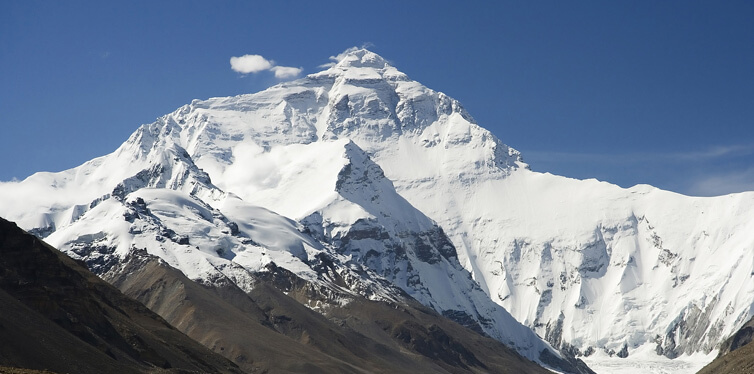
Denali, Alaska
The United States of America is host to this 20, 230 feet wonder. Denali is also famously known by its other name, Mount. McKinley. Tucked away in Alaska, close to the North Pole, Denali is one difficult mountain to climb with only about 50% of climbers ever reaching the summit. Denali isn’t exactly accessible and takes between two to four weeks to complete an expedition. Even worse, Denali has the scary reputation of being earthquake-prone. Seeing as devastating and frightening earthquakes are even on terra firma, 20, 230 feet above the ground level sure is a deadly place to experience one.
Although Denali is not particularly high in comparison to the like of Everest, its high latitude really puts climbers to the test. High latitude implies that the atmosphere is far thinner making breathing difficult for climbers. A combination of high latitude, earthquakes, altitude sickness and extreme weather make Denali one of the harder mountains to climb. The death of more than 100 climbers attempting summit certainly attests to that.
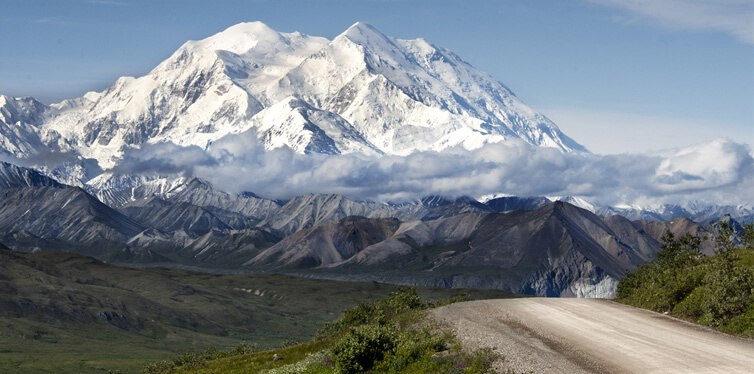
Nanga Parbat, North Pakistan
The easiest way to tell a mountain that is difficult to climb is by the number of times it has been summited. With the like of Everest garnering about 300 hundred summits per year, Nanga was only finally summited in 1953 after claiming over 62 lives. With 5.5% of climbers losing their lives to Nanga without ever reaching the summit, it is no wonder it earned the nickname ‘Man Eater’ for itself. Nanga sure has a taste for human flesh and in large quantities too. In a 1934 expedition, 16 Germans were instantly wiped out on Nanga during an avalanche.
Nanga, incidentally has the largest mountain face in the world and is known for having extreme weather. It’s snow-capped and covered with slippery ice. It is likely a reason why Nanga has never been climbed during winter. Despite avoiding Nanga in the winter, it is obviously a difficult and dangerous mountain to climb as it continues to claim lives. As recently as 2013, a climber disappeared on the peaks of Nanga and has not been found till date.
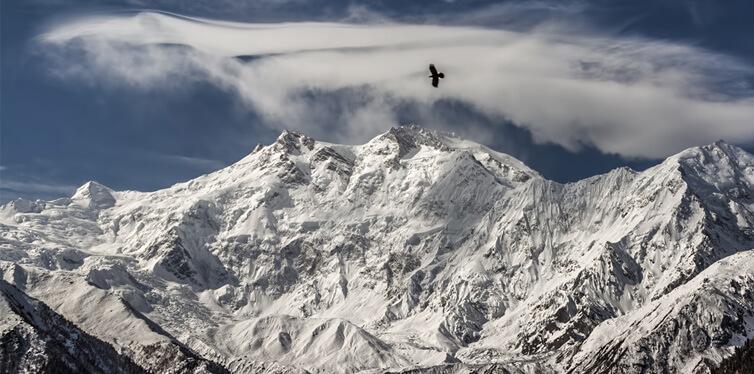
Mont Blanc Massif, Western Alps
Europe too has its own contribution to the difficult mountains list with the Mont Blanc Massif. At 15, 782, it is the highest mountain in Europe. Mont Blanc frequently has rock slides that in addition to the high altitude has claimed thousands of lives over the years. Every year several dozens of people lose their lives to Mont Blanc. An estimate puts figures of fatalities so far recorded on the slopes at between 6,000 – 8000 persons. That is quite a death toll!! Still have conquering Mont Blanc on your bucket list? No problem. Simply prepare for the inevitable altitude sickness and the overcrowding.
Yes, Mont Blanc draws in quite a crowd of often inexperienced climbers. Don’t follow the crowd on this one. Think beyond the number of likes you hope to get on the ‘Gram’ with the dizzying photos of you atop Mont Blanc. Never assume because Mont Blanc is not as high as the likes of Everest and Annapurna, reaching its summit is any less dangerous. With close to 100 deaths yearly from falling rocks and avalanches, Mont Blanc has rightly earned the title of being the most fatal mountain in Europe.

The Eiger, Swiss Alps
Funny how Eiger sounds very much like Ogre which incidentally is one of its nicknames. This ‘ogre’ is a mini mountain in view of its height at 5, 900 feet. Don’t let its size fool you though. The Eiger has the largest North face in all the Alps. Imagine the sheer magnificence of 5, 900 feet of rock face built of solid rock and ice. Magnificent yet quite deadly. The North face is famously known by its nickname, Nordwand which gained further notoriety with the references to it in the Harry Potter series.
All that ice and rock has been known to chip off sending many a climber hurtling down the slopes to their deaths. The technical challenges and difficulty that icy face presents with its subsequent claim to lives have fetched it yet another blood-chilling name, “The Murder Wall” or Mordwand. Way back in 1938, some climbers successfully reached its summit. Since then numerous climbers have braved the Eiger, putting their abilities to the test to break the record and reach its summit. Sadly, 64 persons have been claimed to try to summit Eiger.
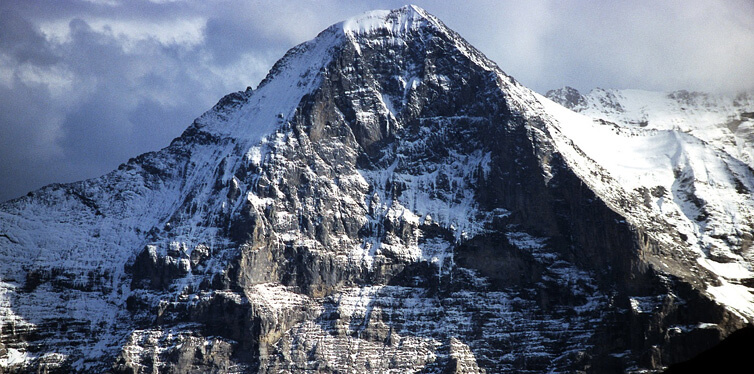
Baintha Brakk
Baintha Brakk is yet another ‘Ogre’, this time located in Pakistan. Seems like every country has got their very own ogre to lay claims to. At 22, 835 feet, Baintha proves to be a hard mountain to climb as evidenced by how infrequently it has been summited. Baitha has only been summited just thrice despite numerous attempts by avid climbers to break the jinx. The first summit dates as far back as 1971 after which its summit remained again unconquered till 2001 despite the over 20 attempts made. The steepness of Baintha’s peaks adds significantly to the technical challenges faced by climbers. Even the earlier conquerors of Baintha did not succeed in summiting it unscathed.
One of the first conquerors had to make his way down the slopes literally crawling on his knees as both legs got broken on the descent. Even worse, he had to do all this crawling in the biting cold as a great storm broke out downhill. Talk about escaping death by a hair’s breadth. Yet another Baintha conqueror caught a bad case of pneumonia with the mountain taking out two of his ribs. Baintha sure has a mean streak. Your winter jacket and winter boots may help you fight the cold weather, but make sure you are fully equipped for these conditions and everything that might go wrong.
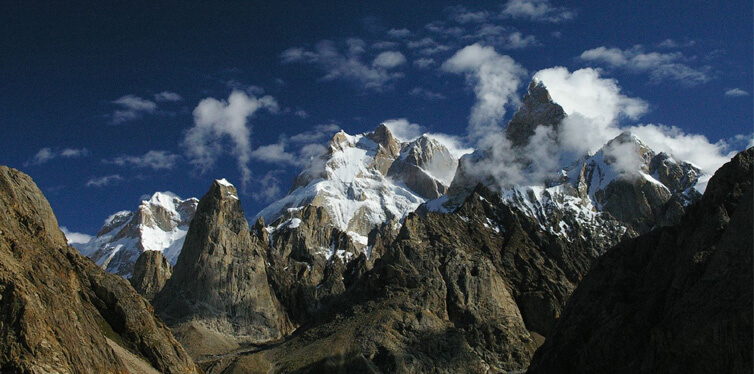
Sources
- Eiger – Wikipedia
- K2 – Wikipedia
- Annapurna Massif – Wikipedia


